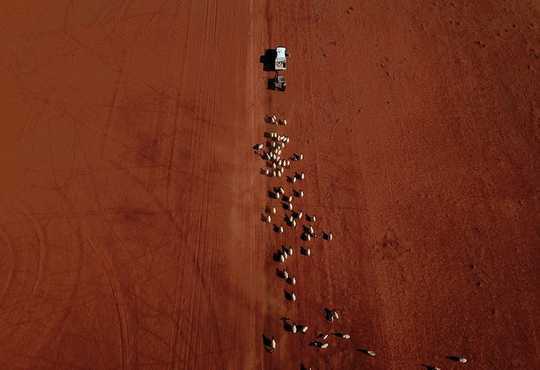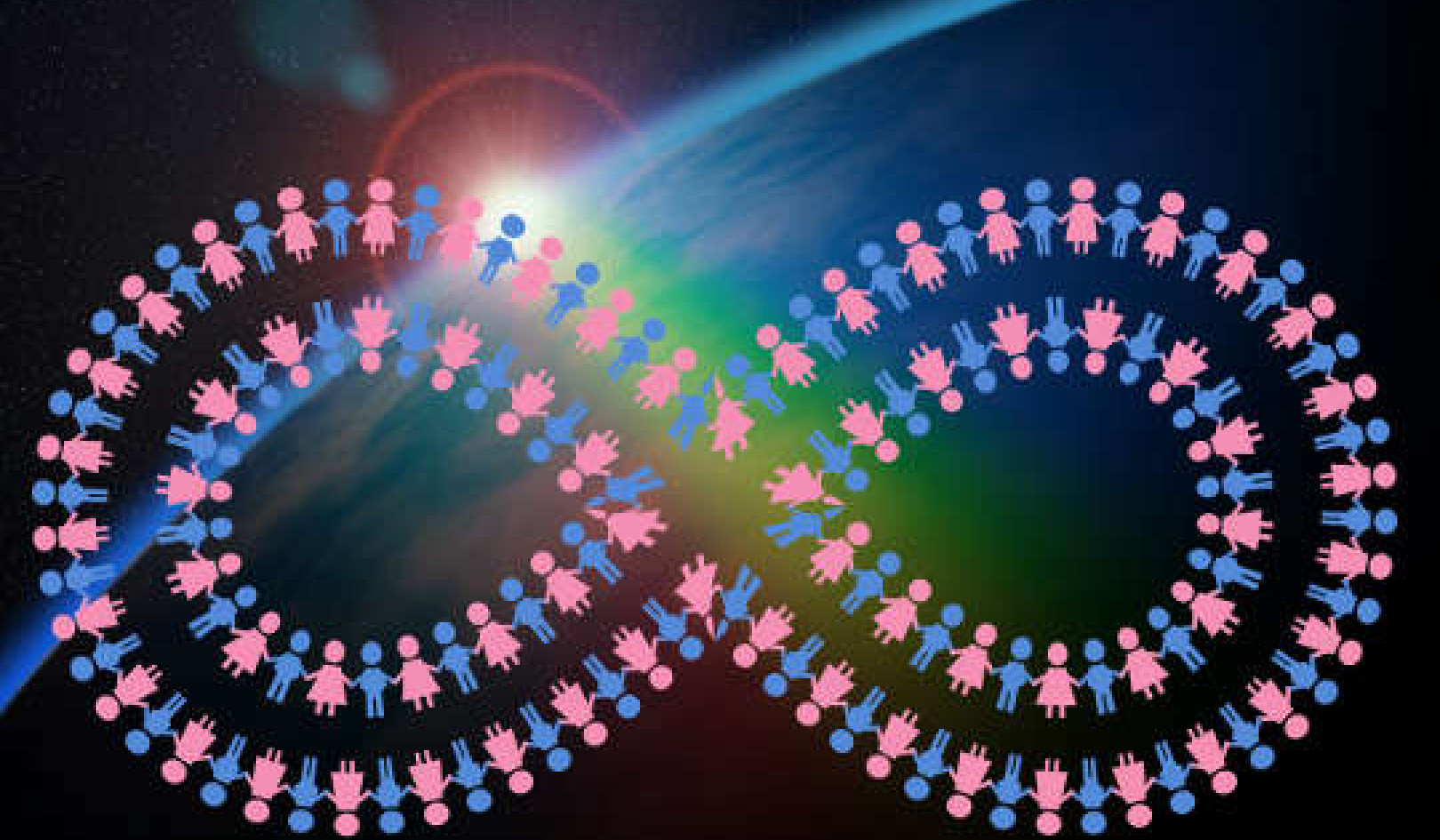
Land clearing, cattle populations and carbon emissions stand alongside temperature as important measures of climate change. DAN PELED/AAP
40 years ago, in July 1979, a small group of scientists met at the world’s first climate conference in Geneva. They raised the alarm about unnerving climate trends.
Today, more than 11,000 scientists have co-signed a letter in the journal BioScience, calling for urgently necessary action on climate.
This is the largest number of scientists to explicitly support a publication calling for climate action. They come from many different fields, reflecting the harm our changing climate is doing to every part of the natural world.
Why no change?
If you’re thinking not much has changed in the past 40 years, you might be right. Globally, greenhouse gas emissions are still rising, with increasingly damaging effects.
Much of the focus to date has been on tracking global surface temperatures. This makes sense, as goals like “prevent 2? of warming” create a relatively simple and easy-to-communicate message.
However, there’s more to climate change than global temperature.
In our paper, we track a broader set of indicators to convey the effects of human activities on greenhouse gas emissions, and the consequent impacts on climate, our environment, and society.
The indicators include human population growth, tree cover loss, fertility rates, fossil fuel subsidies, glacier thickness, and frequency of extreme weather events. All are linked to climate change.
{vembed Y=ikmI4wx9MRE}
Troubling signs over the past 40 years
Profoundly troubling signs linked to human activities include sustained increases in human and ruminant populations, global tree cover loss, fossil fuel consumption, number of plane passengers, and carbon dioxide emissions.
The concurrent trends on the actual impacts of climate change are equally troubling. Sea ice is rapidly disappearing, and ocean heat, ocean acidity, sea level, and extreme weather events are all trending upwards.
These trends need to be closely monitored to assess how we are responding to the climate emergency. Any one of them could hit a point of no return, creating a catastrophic feedback loop that could make more regions of Earth uninhabitable.
The need for better reporting
We urge national governments to report on how their own results are trending. Our indicators will allow policymakers and the public to better understand the magnitude of this crisis, track progress, and realign priorities to alleviate climate change.
Some of the indicators could even be presented monthly to the public during news broadcasts, as they are arguably more important than the trends in the stock exchange.
It’s not too late to act
In our paper we suggest six critical and interrelated steps that governments, and the rest of humanity, can take to lessen the worst effects of climate change:
-
prioritise energy efficiency, and replace fossil fuels with low-carbon renewable energy sources,
-
reduce emissions of short-lived pollutants like methane and soot,
-
protect and restore the Earth’s ecosystems by curbing land clearing,
-
reduce our meat consumption,
-
move away from unsustainable ideas of ever-increasing economic and resource consumption, and
-
stabilise and ideally, gradually reduce human populations while improving human well-being.
We recognise that many of these recommendations are not new. But mitigating and adapting to climate change will entail major transformations across all six areas.
How can you help?
Individuals can make a difference by reducing meat consumption, voting for political parties and members of government bodies who have clear climate change policies, rejecting fossil fuels where possible, using renewable and clean sources of energy, reducing car and air travel, and joining citizen movements.
Lots of small changes will help inspire larger scale shifts in policy and economic frameworks.
We are encouraged by a recent global surge of concern. Some governments are declaring climate emergencies. Grassroots citizen movements are demanding change.
As scientists, we urge widespread use of our indicators to track how changes across the six areas above will start to change our ecosystem trajectories.![]()
About the Authors
Thomas Newsome, Lecturer, University of Sydney and William Ripple, Distinguished Professor and Director, Trophic Cascades Program, Oregon State University
This article is republished from The Conversation under a Creative Commons license. Read the original article.
Related Books
Life After Carbon: The Next Global Transformation of Cities
by Peter Plastrik , John Cleveland The future of our cities is not what it used to be. The modern-city model that took hold globally in the twentieth century has outlived its usefulness. It cannot solve the problems it helped to create—especially global warming. Fortunately, a new model for urban development is emerging in cities to aggressively tackle the realities of climate change. It transforms the way cities design and use physical space, generate economic wealth, consume and dispose of resources, exploit and sustain the natural ecosystems, and prepare for the future. Available On Amazon
The future of our cities is not what it used to be. The modern-city model that took hold globally in the twentieth century has outlived its usefulness. It cannot solve the problems it helped to create—especially global warming. Fortunately, a new model for urban development is emerging in cities to aggressively tackle the realities of climate change. It transforms the way cities design and use physical space, generate economic wealth, consume and dispose of resources, exploit and sustain the natural ecosystems, and prepare for the future. Available On Amazon
The Sixth Extinction: An Unnatural History
by Elizabeth Kolbert Over the last half-billion years, there have been Five mass extinctions, when the diversity of life on earth suddenly and dramatically contracted. Scientists around the world are currently monitoring the sixth extinction, predicted to be the most devastating extinction event since the asteroid impact that wiped out the dinosaurs. This time around, the cataclysm is us. In prose that is at once frank, entertaining, and deeply informed, New Yorker writer Elizabeth Kolbert tells us why and how human beings have altered life on the planet in a way no species has before. Interweaving research in half a dozen disciplines, descriptions of the fascinating species that have already been lost, and the history of extinction as a concept, Kolbert provides a moving and comprehensive account of the disappearances occurring before our very eyes. She shows that the sixth extinction is likely to be mankind's most lasting legacy, compelling us to rethink the fundamental question of what it means to be human. Available On Amazon
Over the last half-billion years, there have been Five mass extinctions, when the diversity of life on earth suddenly and dramatically contracted. Scientists around the world are currently monitoring the sixth extinction, predicted to be the most devastating extinction event since the asteroid impact that wiped out the dinosaurs. This time around, the cataclysm is us. In prose that is at once frank, entertaining, and deeply informed, New Yorker writer Elizabeth Kolbert tells us why and how human beings have altered life on the planet in a way no species has before. Interweaving research in half a dozen disciplines, descriptions of the fascinating species that have already been lost, and the history of extinction as a concept, Kolbert provides a moving and comprehensive account of the disappearances occurring before our very eyes. She shows that the sixth extinction is likely to be mankind's most lasting legacy, compelling us to rethink the fundamental question of what it means to be human. Available On Amazon
Climate Wars: The Fight for Survival as the World Overheats
by Gwynne Dyer Waves of climate refugees. Dozens of failed states. All-out war. From one of the world’s great geopolitical analysts comes a terrifying glimpse of the strategic realities of the near future, when climate change drives the world’s powers towards the cut-throat politics of survival. Prescient and unflinching, Climate Wars will be one of the most important books of the coming years. Read it and find out what we’re heading for. Available On Amazon
Waves of climate refugees. Dozens of failed states. All-out war. From one of the world’s great geopolitical analysts comes a terrifying glimpse of the strategic realities of the near future, when climate change drives the world’s powers towards the cut-throat politics of survival. Prescient and unflinching, Climate Wars will be one of the most important books of the coming years. Read it and find out what we’re heading for. Available On Amazon
From The Publisher:
Purchases on Amazon go to defray the cost of bringing you InnerSelf.comelf.com, MightyNatural.com, and ClimateImpactNews.com at no cost and without advertisers that track your browsing habits. Even if you click on a link but don't buy these selected products, anything else you buy in that same visit on Amazon pays us a small commission. There is no additional cost to you, so please contribute to the effort. You can also use this link to use to Amazon at any time so you can help support our efforts.























